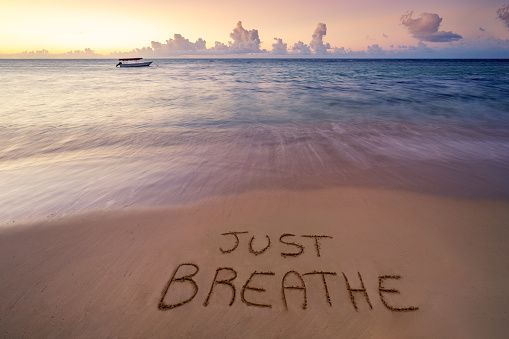We continue our exploration of a book, Spiritual Ecology: 10 Practices to Reawaken the Sacred in Everyday Life, by Llewellyn Vaughan-Lee. This month, the focus is on the practice of breathing. In the Sufi tradition it is said that everything begins with the breath and everything ends with the breath.
The awareness of breath is central as a practice across most spiritual traditions. However, it is often overlooked because of its accessibility and simplicity. And yet, the practice of developing mindfulness by centering one’s attention on the breath is phenomenally effective:
From the book: “Spiritual ecology is a recognition of the need to return to the source of our own sacred nature, and of the spiritual practices that affect both the individual and the whole, practices that can, through our own individual awareness and action, also help restore the connection between the Earth and its own Source. With the simple practice of awareness of breath we can help to keep this connection alive. We can help the pure energy of life flow between the worlds.”
Here are some guidelines to get you started:
Simple yet eloquent. Embrace the simplicity. It doesn’t have to be difficult. Just breathe.
And so it is.
Peace and blessings,
Rev. Simon
The awareness of breath is central as a practice across most spiritual traditions. However, it is often overlooked because of its accessibility and simplicity. And yet, the practice of developing mindfulness by centering one’s attention on the breath is phenomenally effective:
- As long as we are living, the breath is ever present as a tangible focal point for attention.
- The breath tends to be neutral. Unless, perhaps, you have difficulty breathing, the breath tends not to trigger anyone’s resistance.
- The breath involves a physical sensation which facilitates awareness. It is neither conceptual, theoretical, abstract, nor does it require one to be competent at visualization or imagination.
From the book: “Spiritual ecology is a recognition of the need to return to the source of our own sacred nature, and of the spiritual practices that affect both the individual and the whole, practices that can, through our own individual awareness and action, also help restore the connection between the Earth and its own Source. With the simple practice of awareness of breath we can help to keep this connection alive. We can help the pure energy of life flow between the worlds.”
Here are some guidelines to get you started:
- Find your most accessible point of awareness of the breath. Perhaps you focus on the rise and fall of the chest or the rise and fall of the belly. Perhaps it is easier for you to focus on the sensation of air moving in and out of the mouth or the nose. Pick whichever works best for you in the moment. Simple.
- You can focus on the breath as part of a regular practice time or simply find a way to remind yourself to be aware for a few moments throughout your day. Set a timer on your phone or watch at a regular interval. When it goes off, focus on the breath for a few moments.
- You are in charge of your breath. You can simply pay attention to that moment’s natural rate and rhythm without judgment or effort to change or you can count your breaths, perhaps even experimenting with breathing in for a specific count and breathing out for a specific count. The inhalation and exhalation can be equal or you can vary them (i.e. a 4-count inhale with an 8-count exhale). You can add a pause (gently holding the breath) after the in-breath and/or after the out-breath. You can breathe deep or shallow; fast or slow. So many options and all of them valid. Simply explore and experiment, letting go of all sense of, “Am I doing this right?”
- Notice the sensations in your body and the flow of your thoughts and feelings as you attend to your breath. Does mindful breathing slow down your mind? Does it impact your mood? Approach these questions with a gentle curiosity rather than an intellectual, academic rigor.
Simple yet eloquent. Embrace the simplicity. It doesn’t have to be difficult. Just breathe.
And so it is.
Peace and blessings,
Rev. Simon
